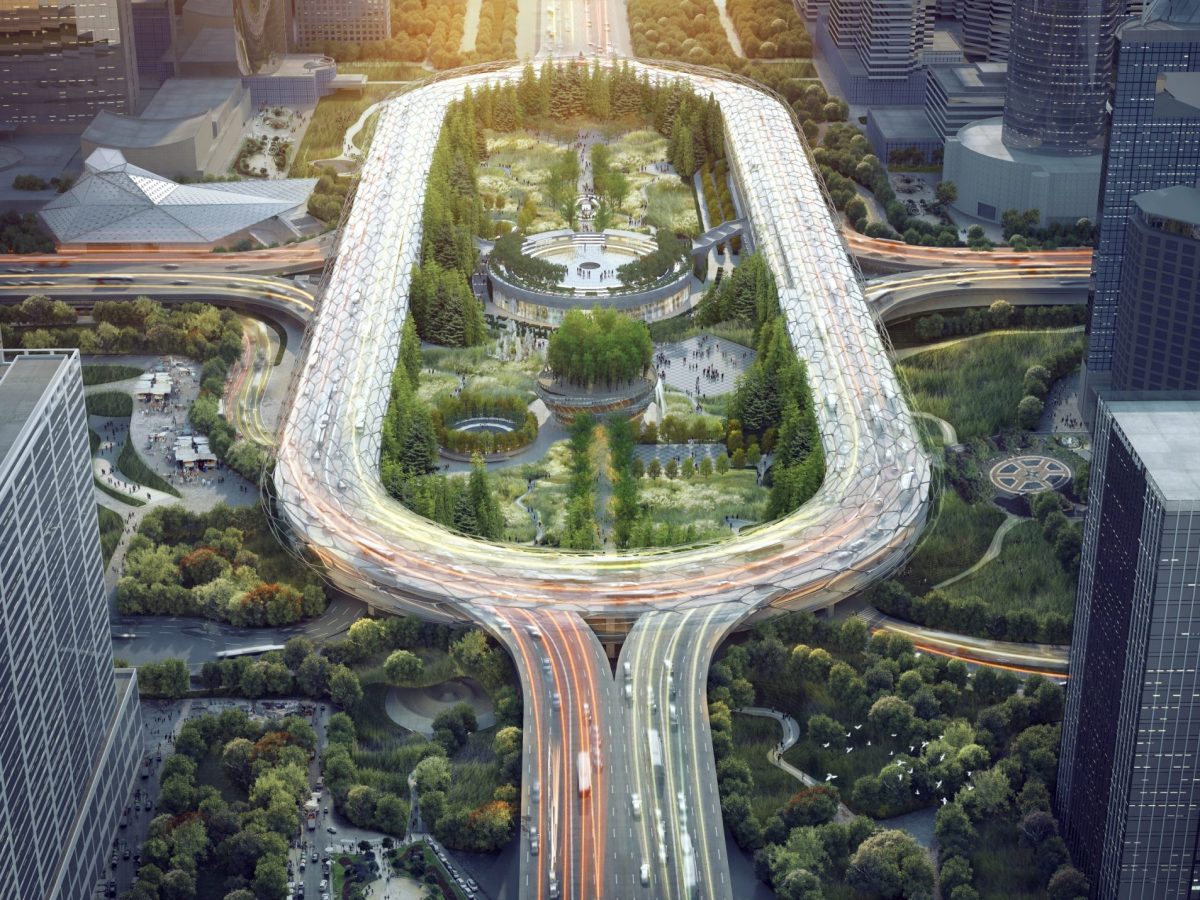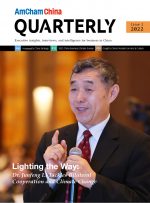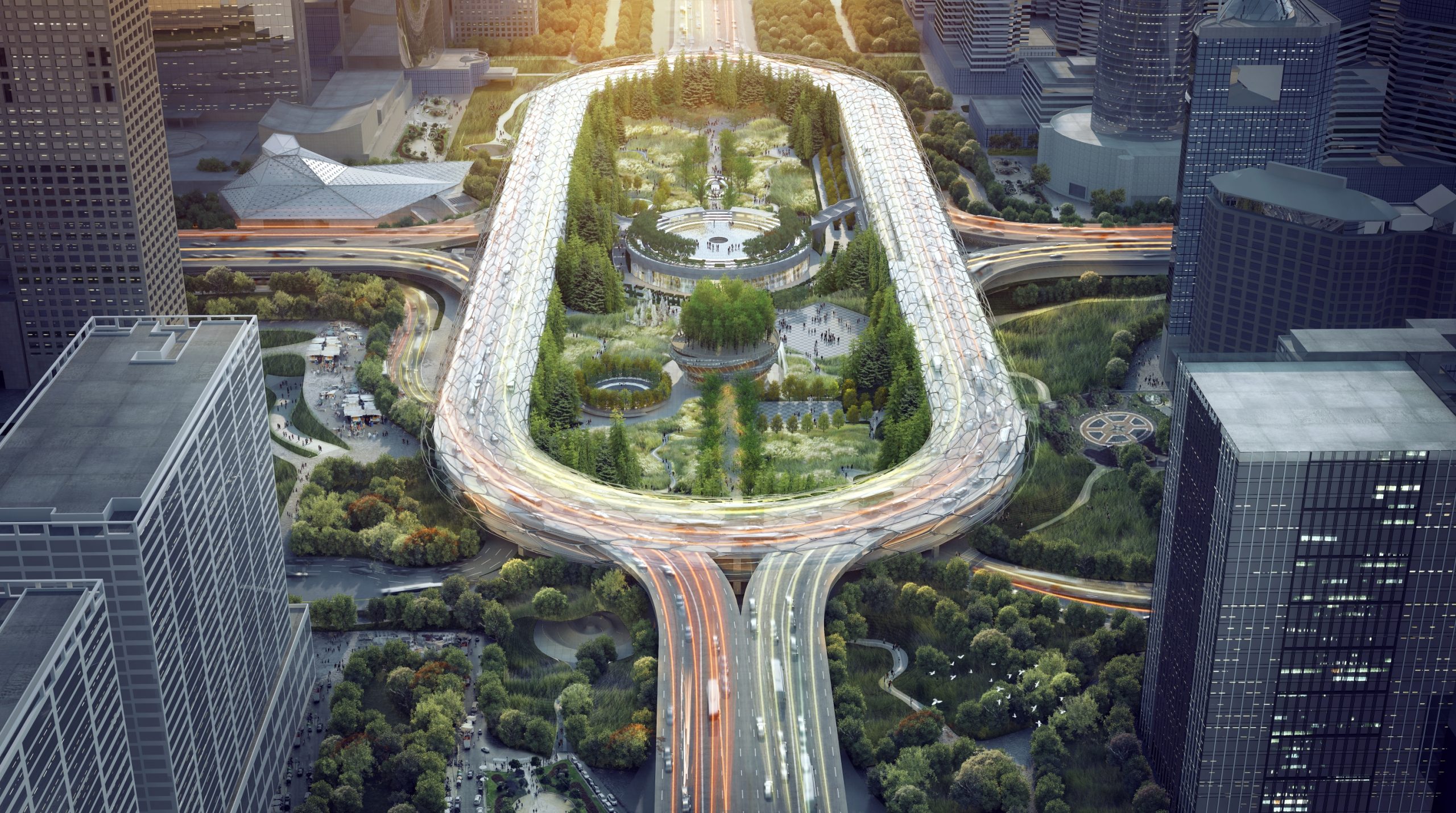BAM is Building the Future: Beauty is Key to Sustainability
By Norris Tangen
Ballistic Architecture Machine (BAM) is a groundbreaking multidisciplinary design firm with a refreshingly unique approach to design. The AmCham China Quarterly sat down with Co-founders Jake Walker, head of the Beijing office, and Daniel Gass, head of the Shanghai office, to discuss their favorite projects, ecological design, and China’s green cities.

Photo courtesy of BAM
Ballistic Architecture Machine (or simply just “BAM”) is a multidisciplinary design firm with a focus on issues related to the Chinese urban landscape. Jake Walker, Co-founder and the head of BAM’s Beijing office, describes the firm’s ethos by saying, “We believe that landscape is ‘everything outside of the architecture, and is the true material of the city.’ Our scope of work is not limited because landscape is the connective tissue which is not only the space that defines the cities, but is also the interstitial realm bridging urban and rural as well as constructed and non-constructed spaces, like wildernesses.”
BAM was originally founded in Massachusetts in late 2007, just before the global financial crisis. Daniel Gass, Co-founder and head of BAM’s Shanghai office recalls, “It had been clear even at that time that economies outside of America were not only building more, but being more proactive in defining and redefining their public realms.” Beijing made the ideal starting place for their international expansion. Gass explains the city’s particular appeal, noting that “It was less westernized than other cities in China. Given that our work is fundamentally about the public realm, there exists an important socially progressive message in our work. We therefore believed that placing ourselves in a more art-oriented and political milieu, versus an environment focused solely on business, would be critical to upending typically held views about the value of landscape.”
Operating with the tagline “Nature is an Idea,” the firm boasts a diverse portfolio of work which includes everything from landscape to architecture and installation design. However, Gass says he’s most drawn to projects where the client has a unique vision, or ambitions beyond simply meeting the market’s needs. “It may sound cliché, but in this world of digital regurgitation, it is very rare to find a client that is looking for more than just collaging internet-famous pieces of other projects they know to have had market success together.” He goes on to say that, surprisingly, he has welcomed the lull in the real estate sector because it has forced developers to move beyond the “copy and paste” trend of recent years.
The New Green Park
One of BAM’s most talked-about projects is the innovative Daxing New Town Green Hub & Park in Beijing. The park, which is located on a primary subway line connecting the center of Beijing and Daxing Airport, was proposed by the local government to serve as a central park. The park immediately impresses visitors with its unique elements and integrated design, and the project is a prime example of BAM’s expertise when it comes melding urban sensibilities with environmentally conscious principles. Retail and office space, park structures, subway links and bus hubs, as well as entertainment spaces including a chess pavilion, basketball courts, and playgrounds all blend seamlessly with surrounding natural elements. Walker acknowledges the different approach. “Unlike most parks, Daxing Park touches the doorstep of the surrounding buildings. The parking garage, subway station, restaurants, homes, and commercial spaces all plug directly into the fabric of the park.” He adds that the park prompts questions about park typology in an era where private developers are keen to edge out competition by partnering with public interests. Walker muses, “Can these zones become truly public parks, or will they become neighborhood territories dominated by the lucky residents surrounding them?” He believes – at least if the case of Daxing Park is any indicator – that a wide user base can promote a more public approach. However, he says only time will tell. “It remains to be seen as the park matures if the subway and park and ride facilities will pull in an even broader public to enjoy the park.”

Ballistic Architecture Machine (BAM) is an award-winning, multidisciplinary design firm with offices in Beijing and Shanghai. Founded by three friends, Cornell graduates Daniel Gass, Jacob Walker, and Allison Dailey, now nearing its 15th anniversary, BAM has evolved to become one of China’s leading urban and landscape design practices.
BAM’s unwavering stance is that the landscape is the most important design realm of the 21st century. While always focused on the landscape spaces of the urban realm, BAM’s strategy of ‘just say yes’ has led to an extremely diverse body of work which fits uncomfortably into traditional definitions of Landscape Architecture, Urban Design, Architecture or Installation. BAM’s enigmatic slogan, “Nature is an Idea,” nods at the perpetual debate within landscape-oriented professions regarding the relationship of landscape to aesthetics, culture, and the environment.
Photo courtesy of Niederhauser
China’s Ecological Foundation
Gass bristles when asked if green design is becoming the norm in China. He argues that, in fact, China has a long history of ecologically conscious design and has historically had a much stronger connection to the idea of constructed landscapes when compared most other heavily urbanized nations. In contrast to the US, Gass says, the differences are stark. “Compared to China, America’s perspectives and ideas about the constructed realm and the role of landscape design plays in that realm are nascent and lack a pervasive and unifying ideology.” Walker adds that, “Designing landscapes in China is so rewarding because there is an underlying cultural understanding of the inherent importance.” Both Gass and Walker perceive that this cultural understanding also extends to China’s city planning philosophy, with Gass observing, “Most Chinese cities are in fact quite green. It is standard practice in almost all Chinese urban plans to implement street trees.” While the average Chinese citizen might not find this novel, by contrast, he says, almost no US cities outline such requirements.
While China is ahead of the curve when it comes to ecological design, Walker concedes that inherent challenges will always remain, largely because “Ecology is something that works at scale.” Citing an understanding of the scale of operations key, he notes that the larger a project becomes, the more important it is that the underlying foundation is based on sound ecological principals. However, he says, unfortunately landscape concerns typically tend to be on the low end of the financial equation, as most real estate is focused on maximizing constructed areas. “This means that the financial equation benefits architecture over landscape.” He continues, “No matter how much we may kick and scream to preserve a waterway, or keep some trees, or maintain some semblance of the preexisting site condition, if such requests get in the way of maximizing constructed area, they will not see the light of day.”

This article is from the AmCham China Quarterly Magazine (Issue 2, 2022). To access the entire publication for free, sign up on our member portal here.

